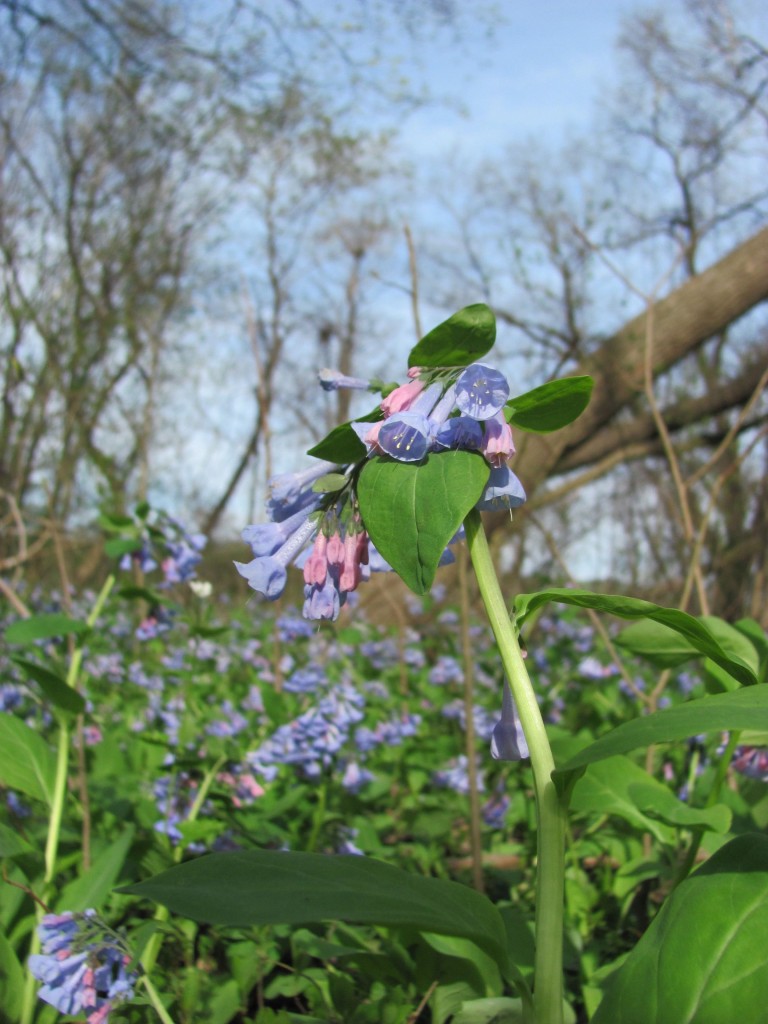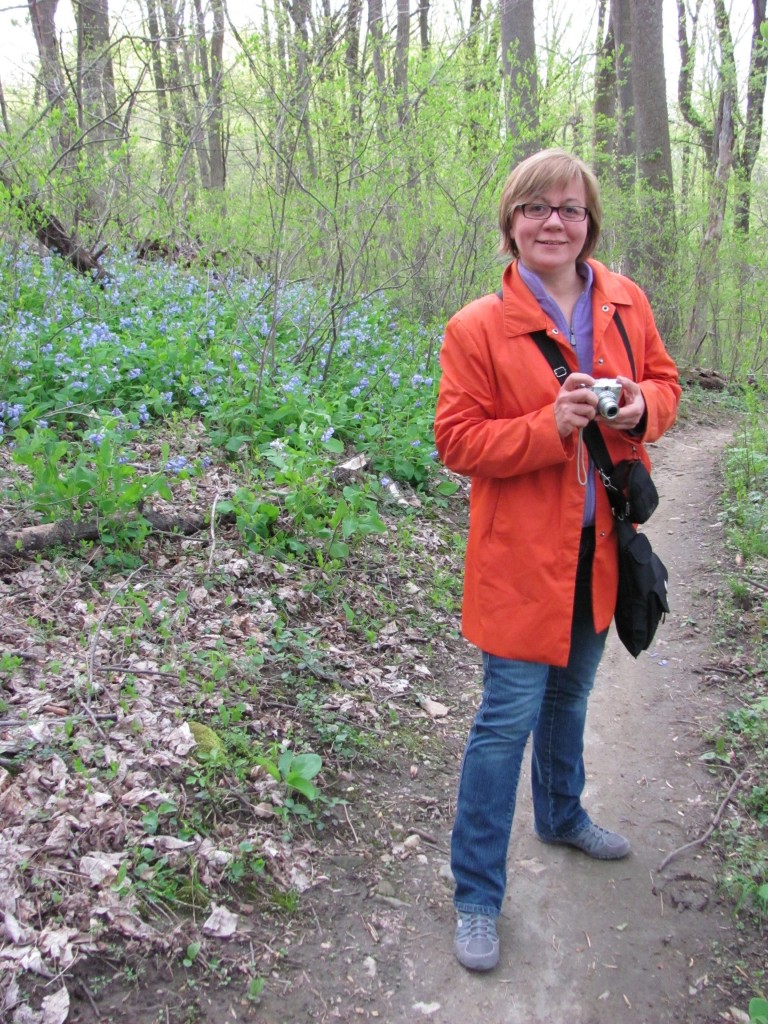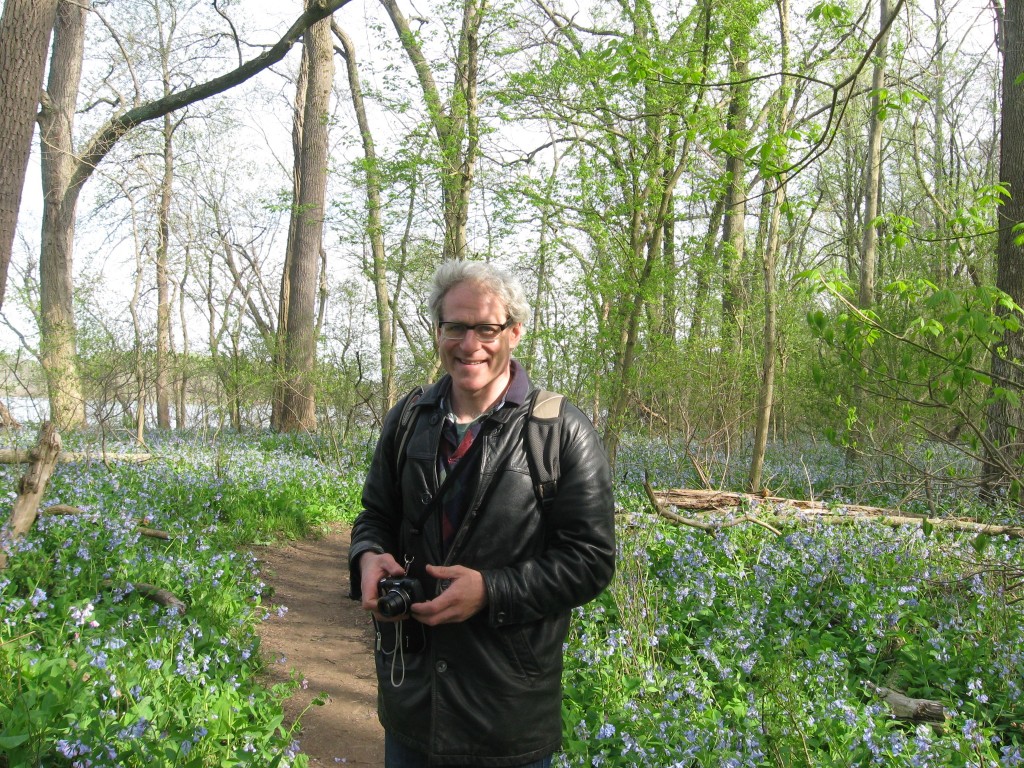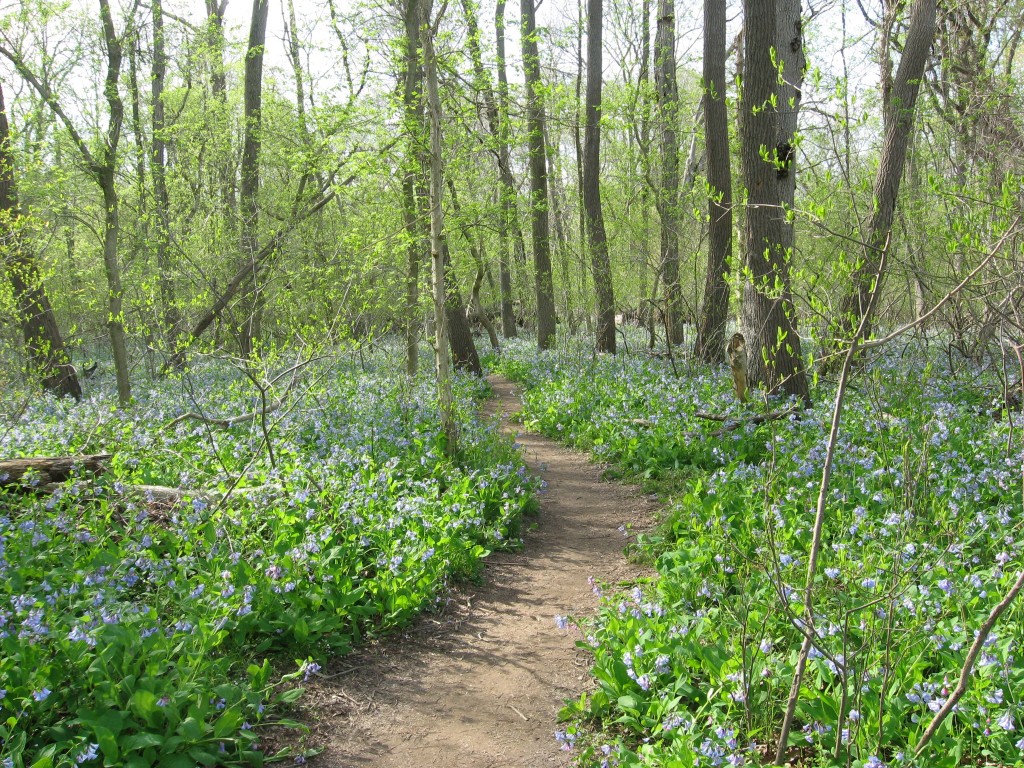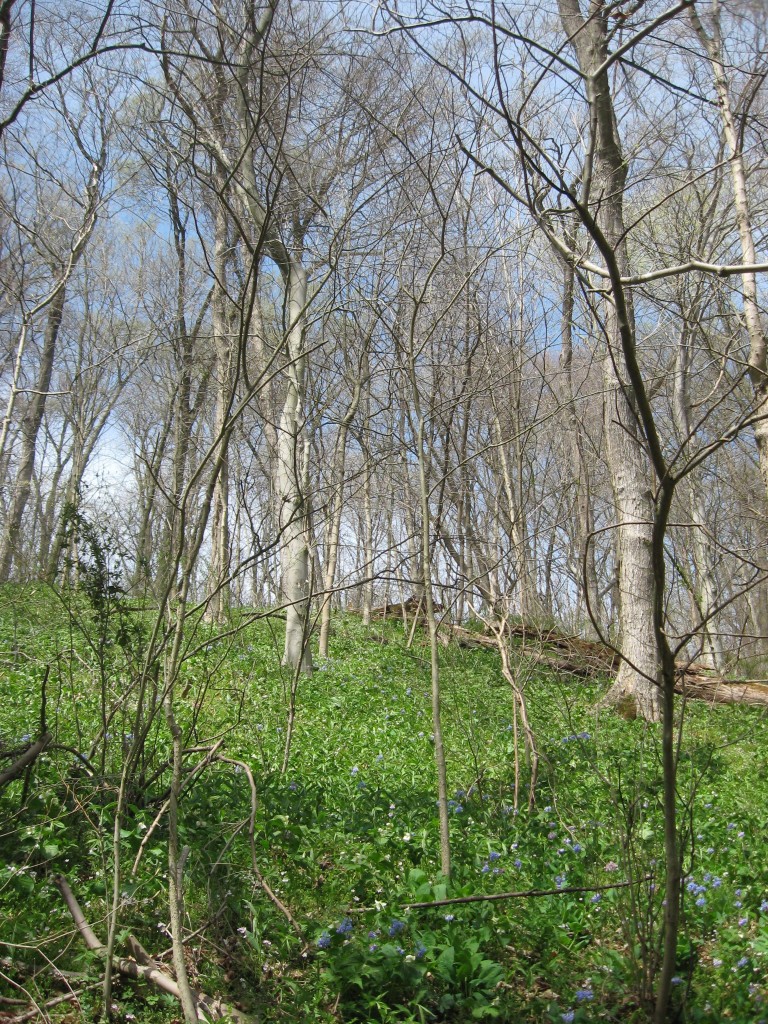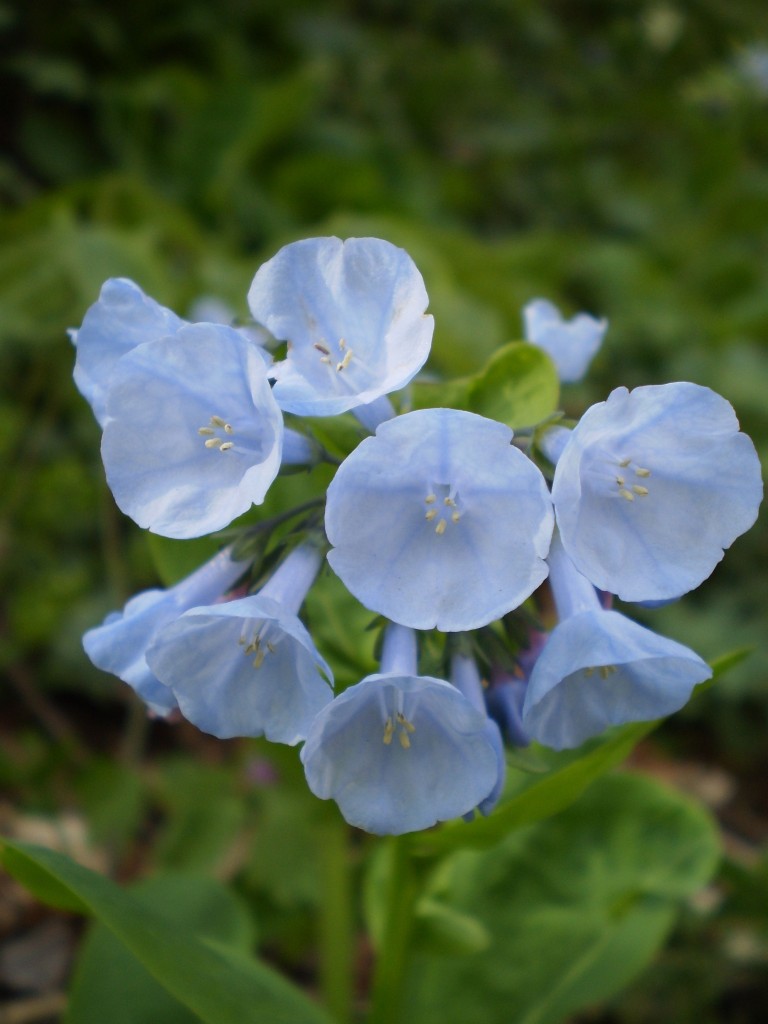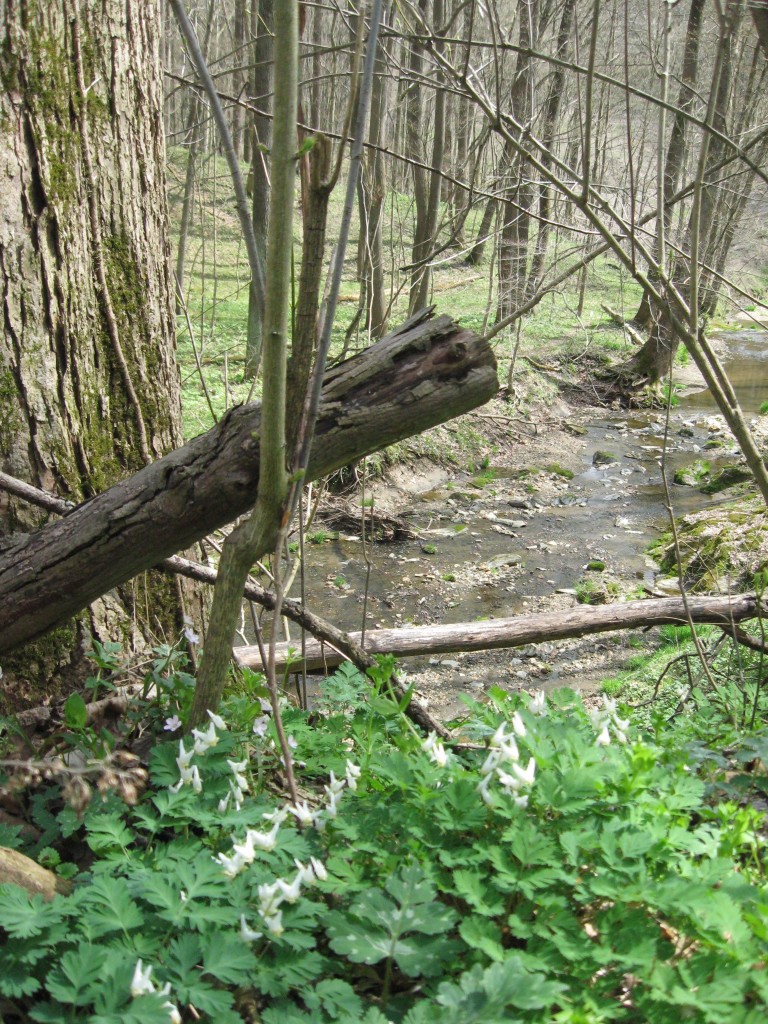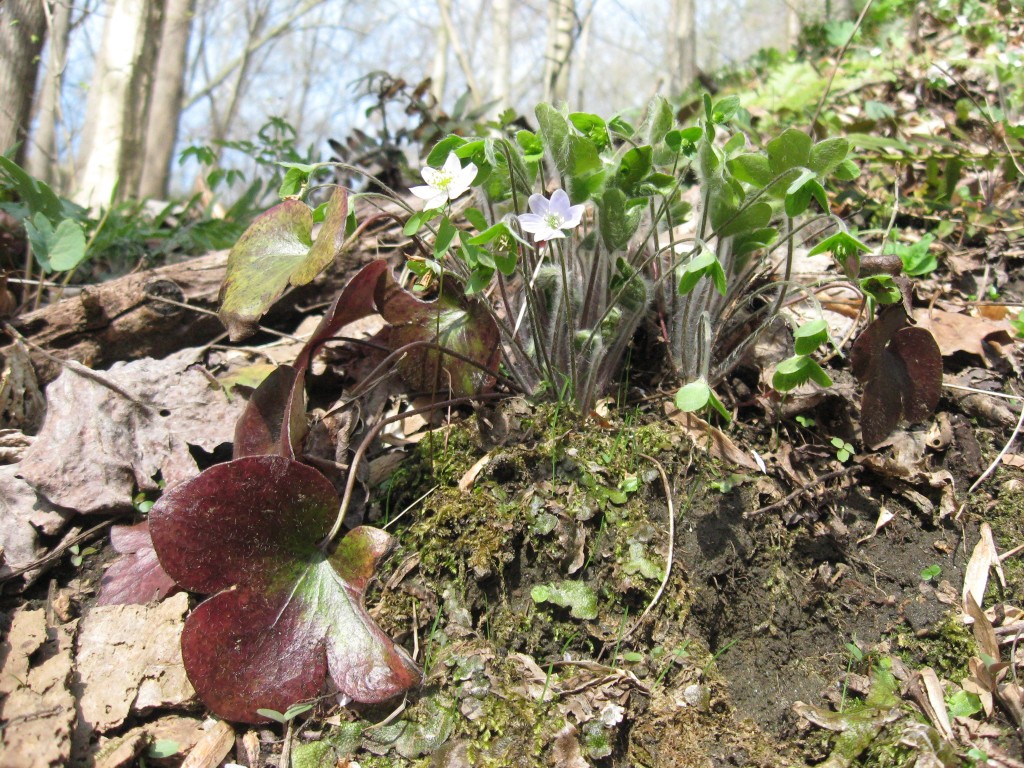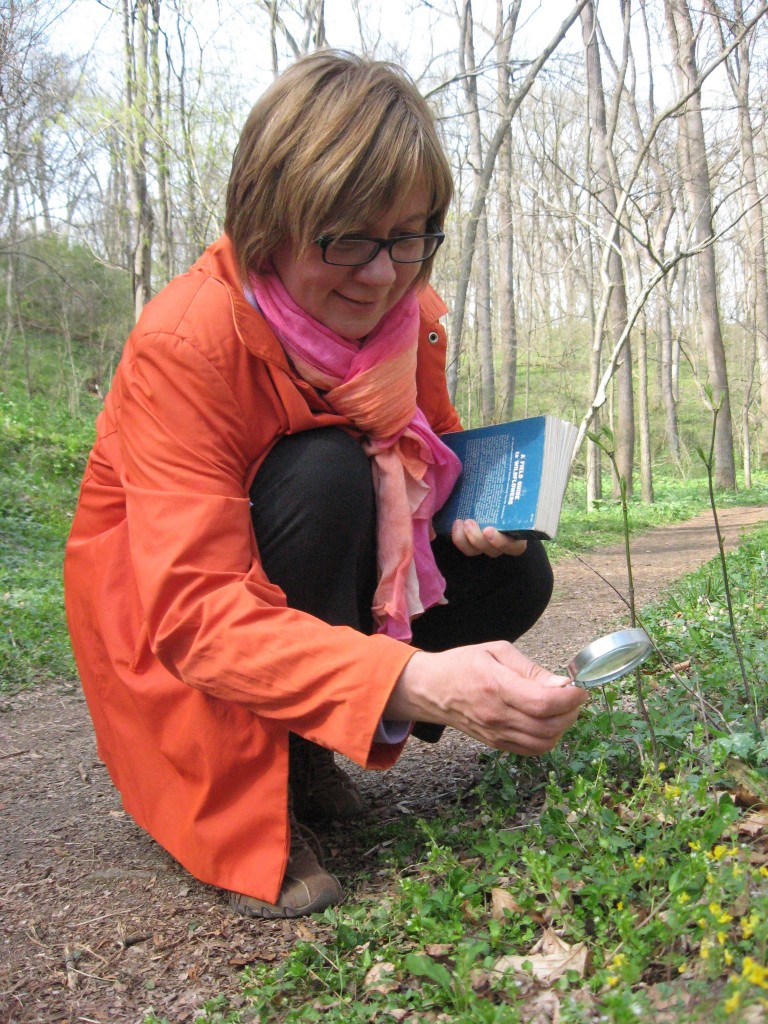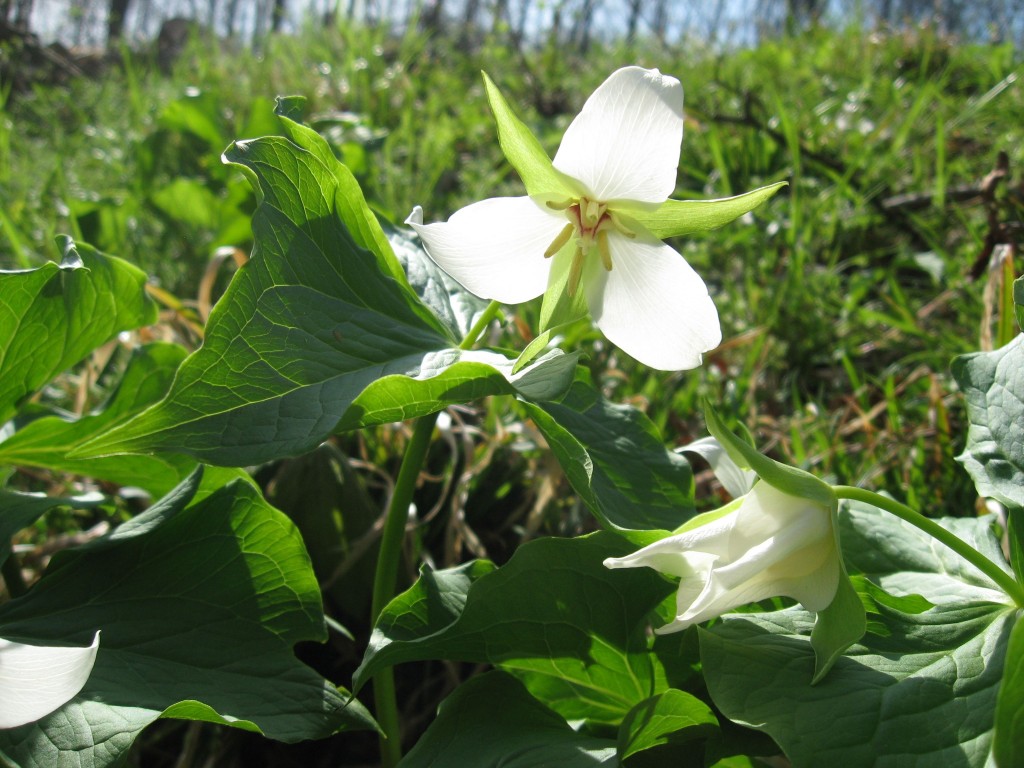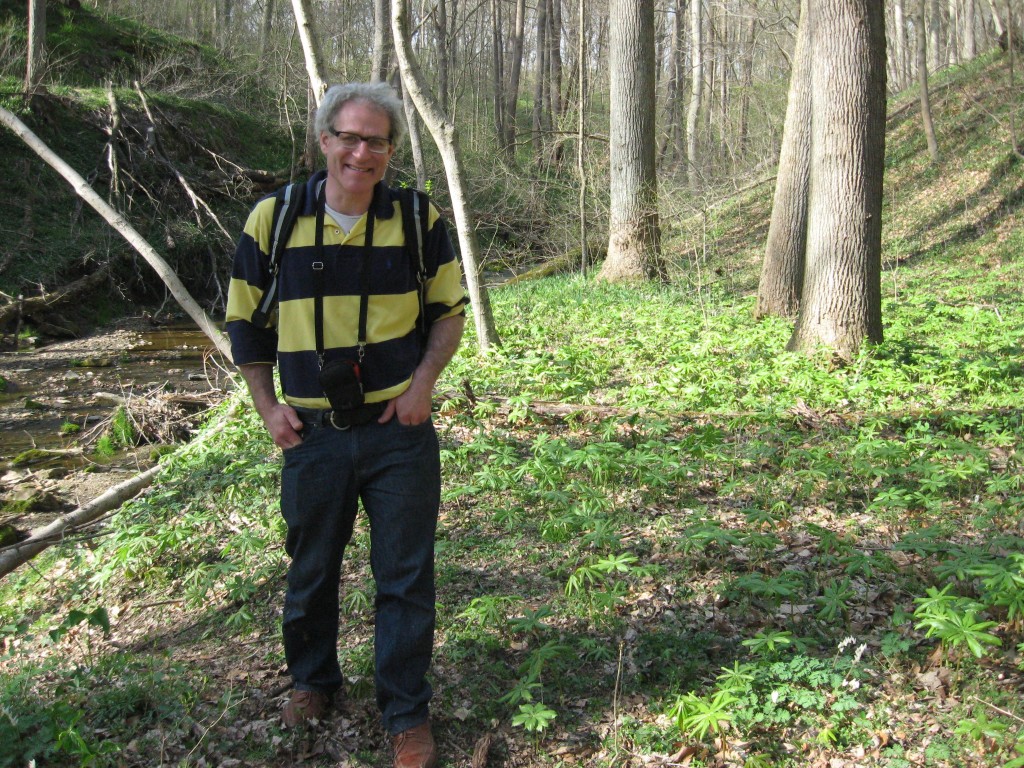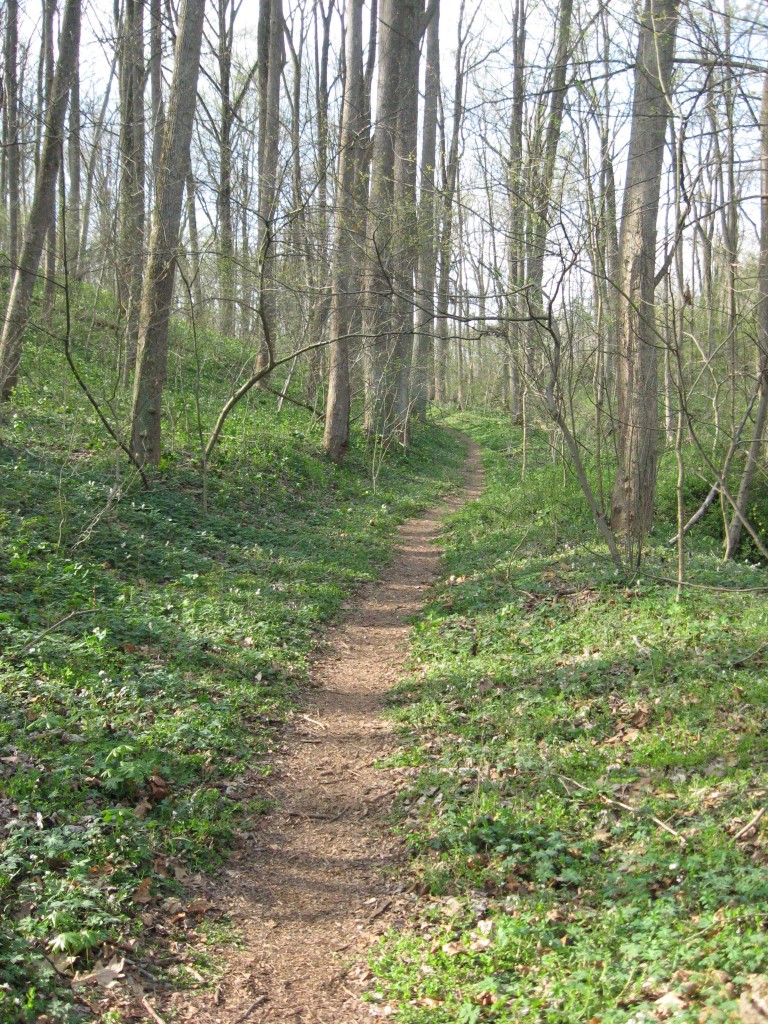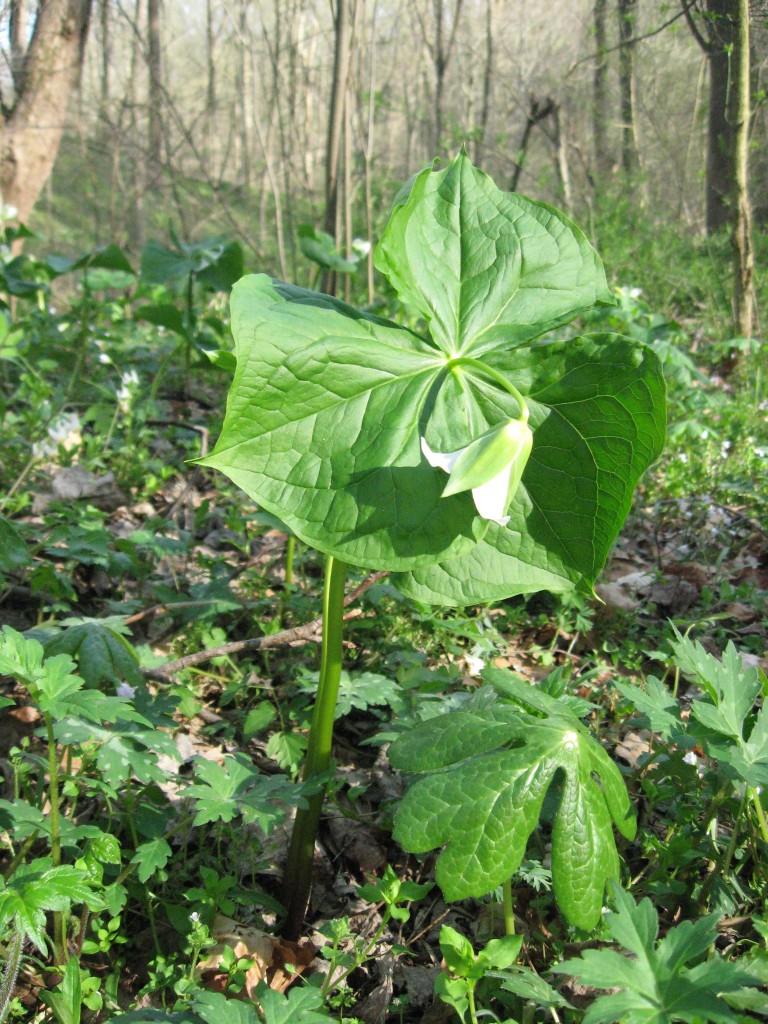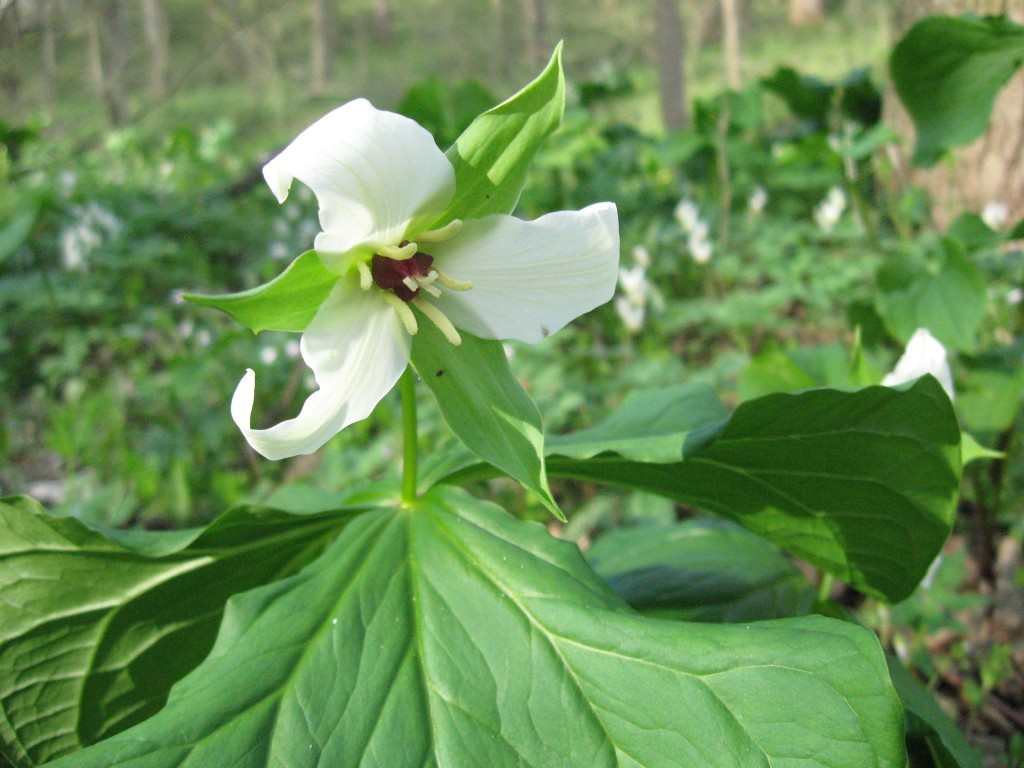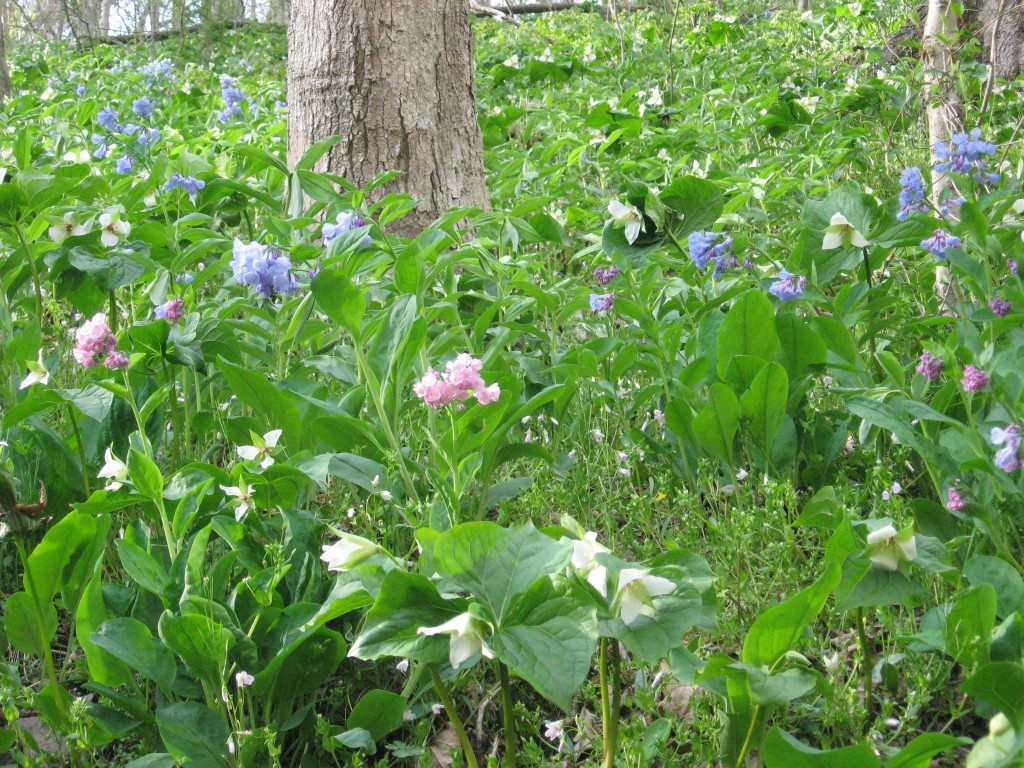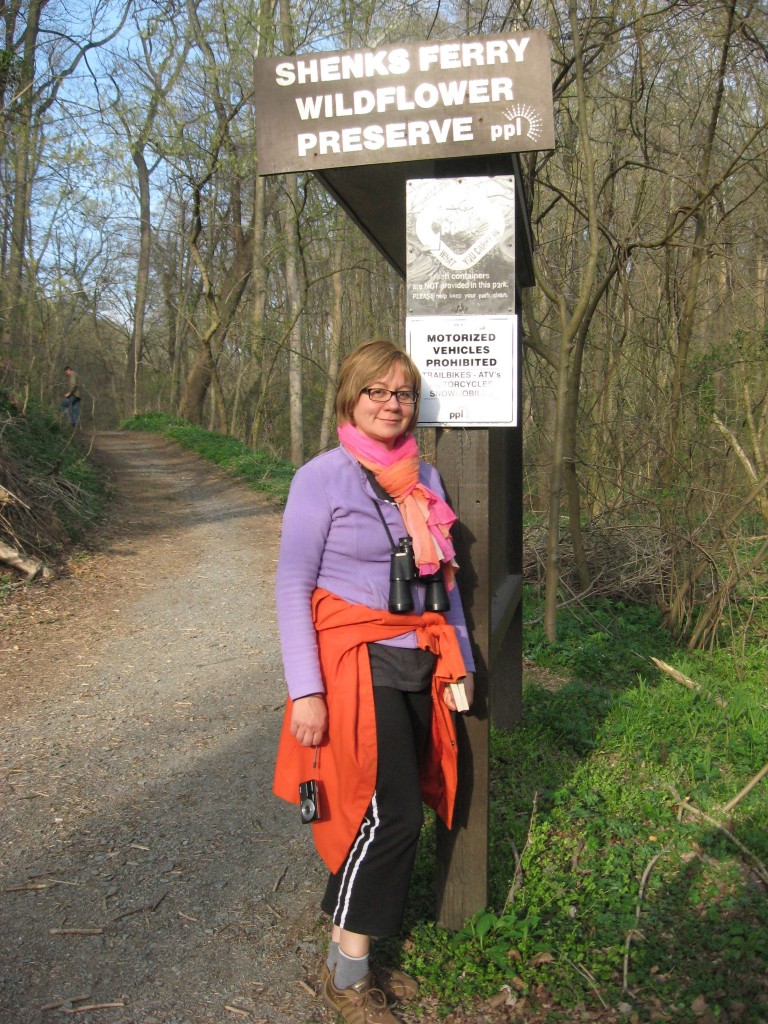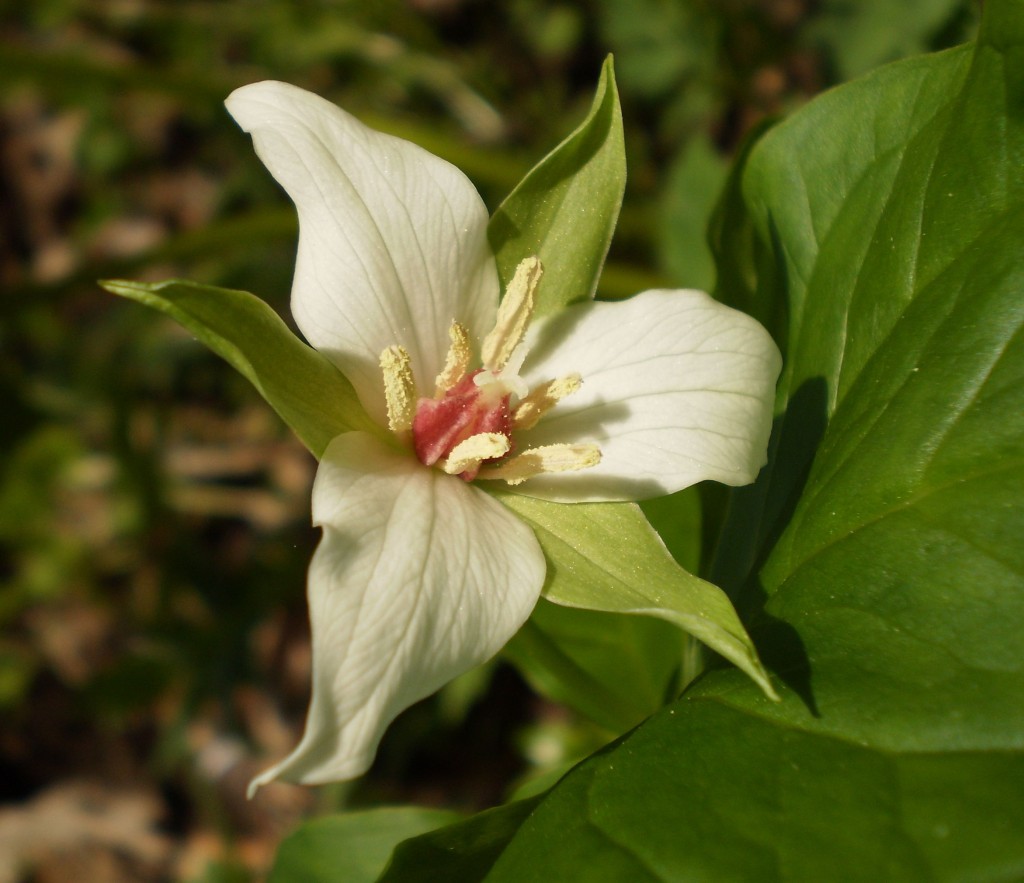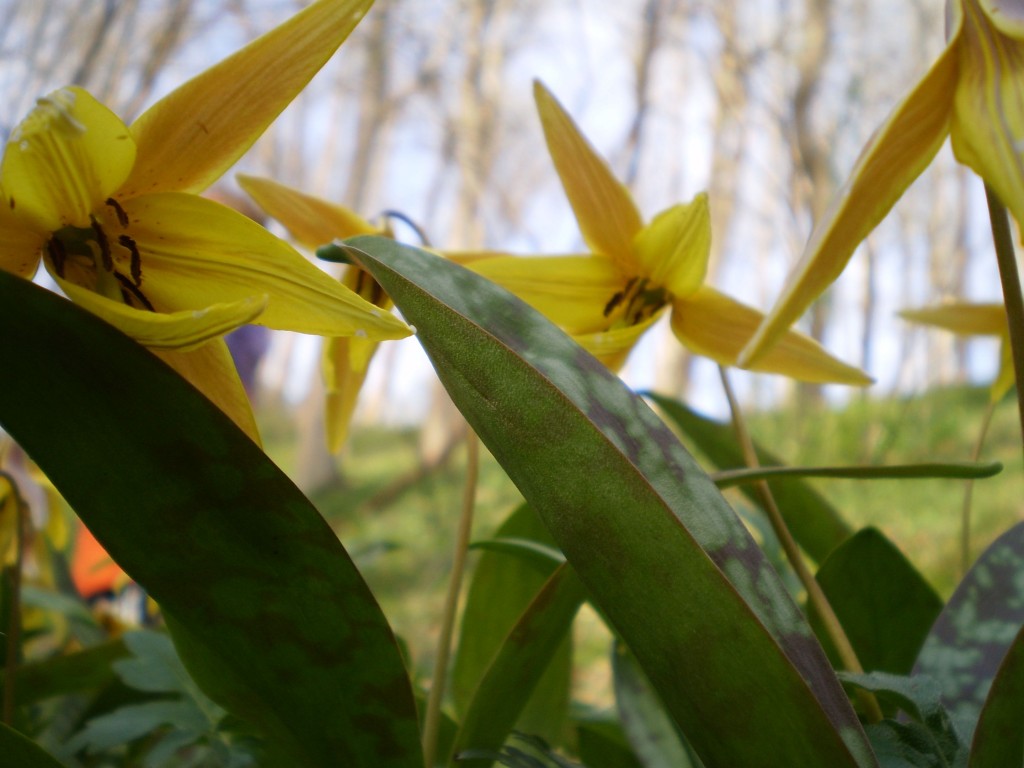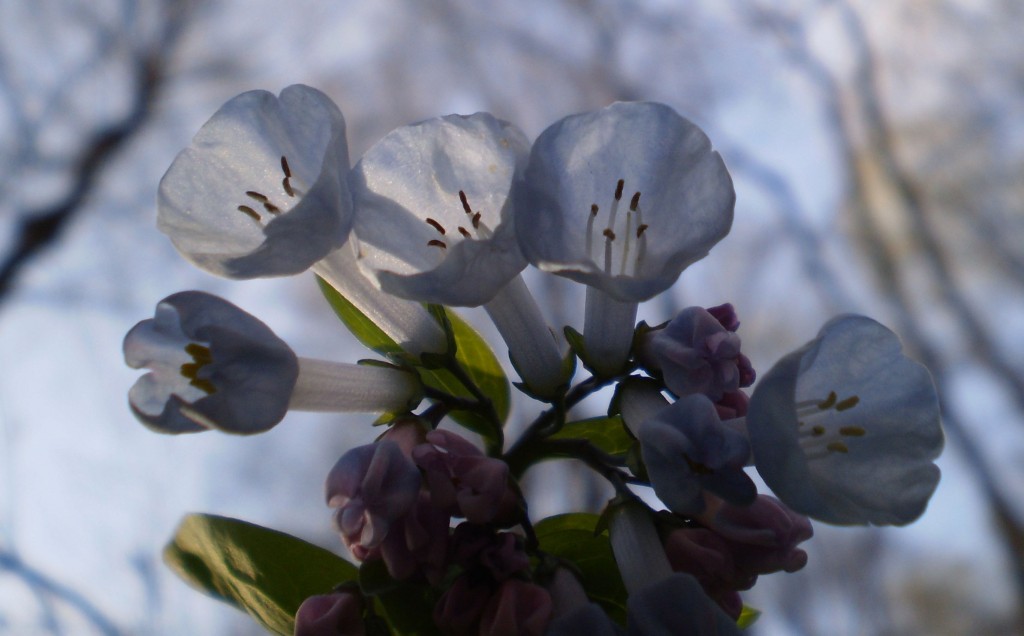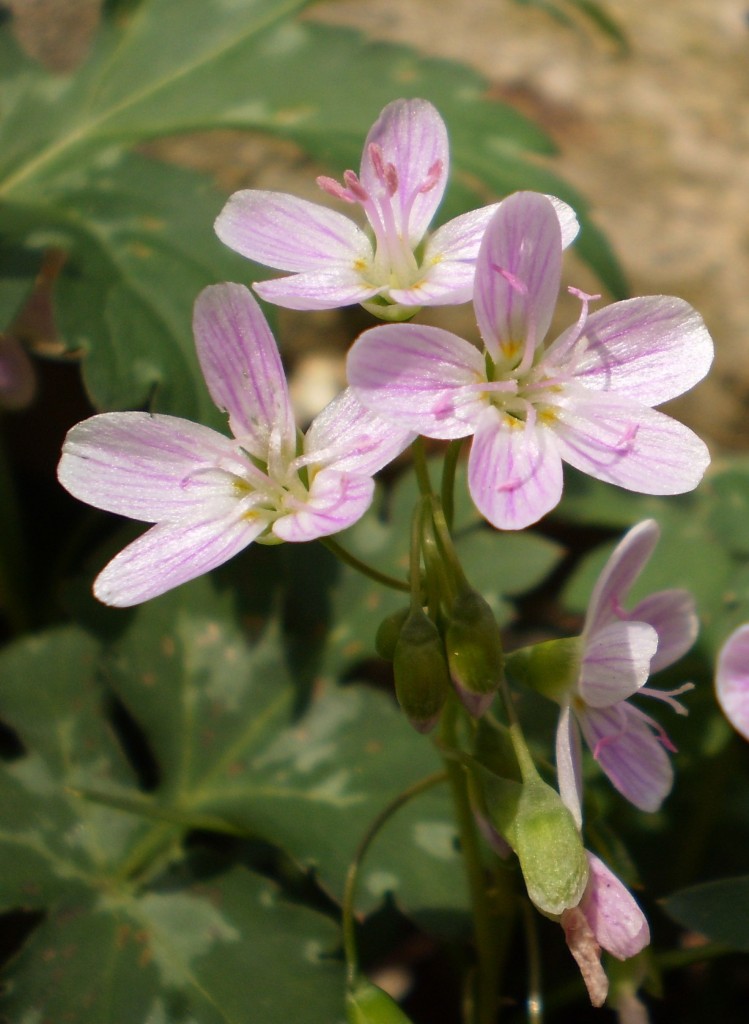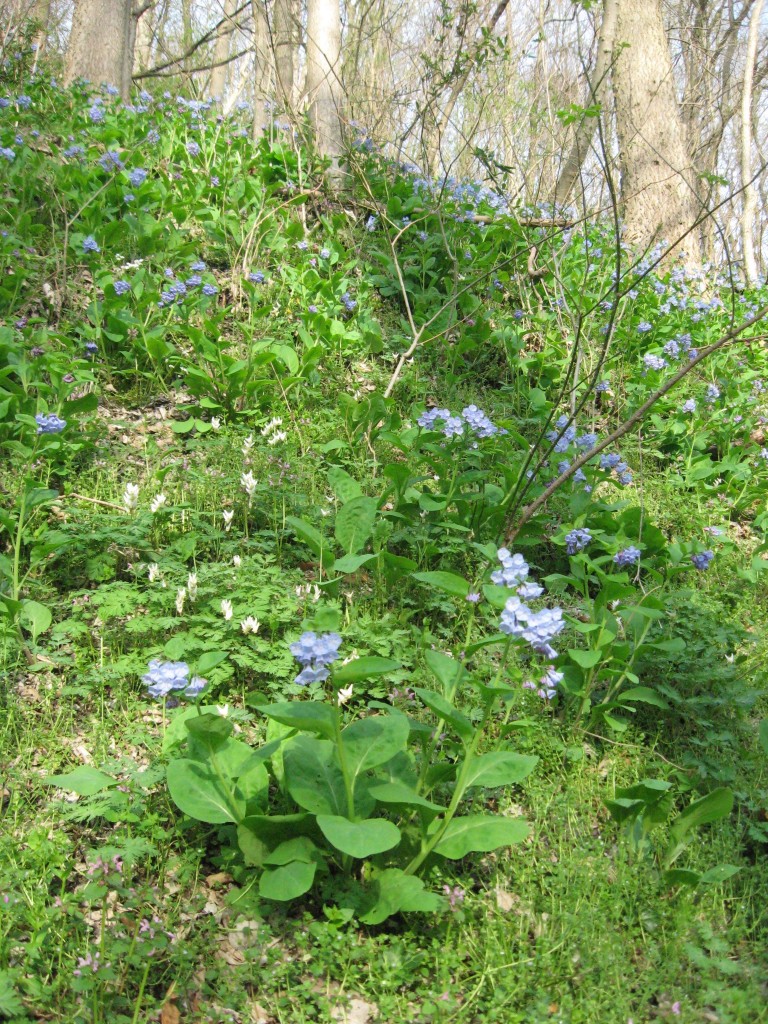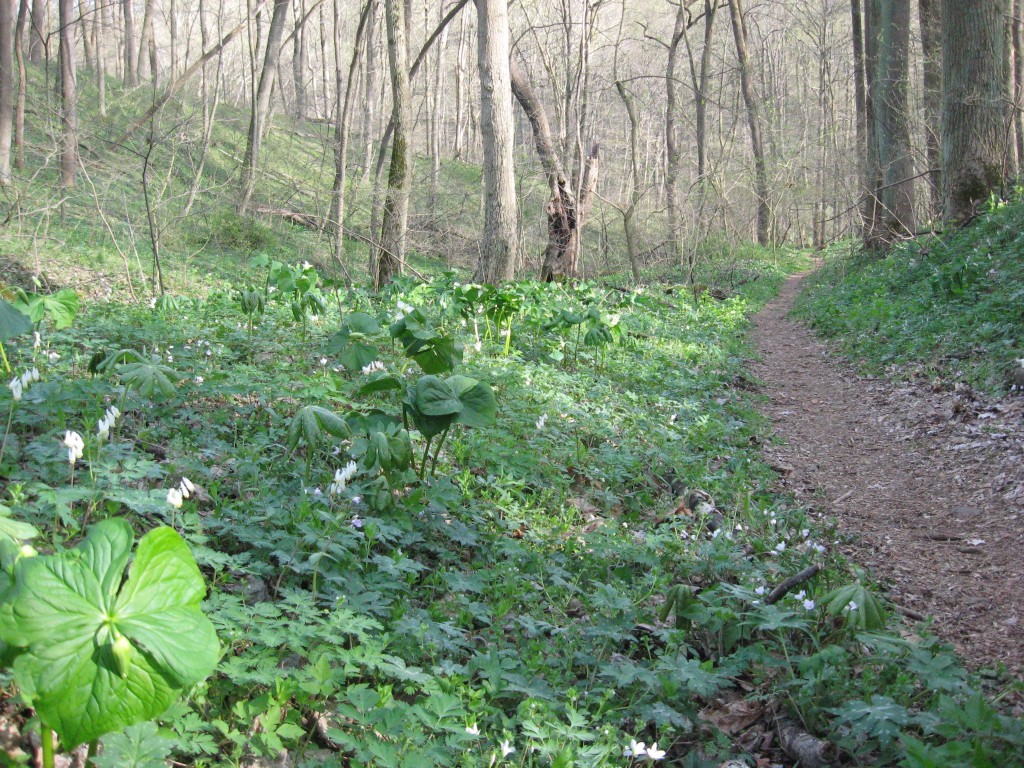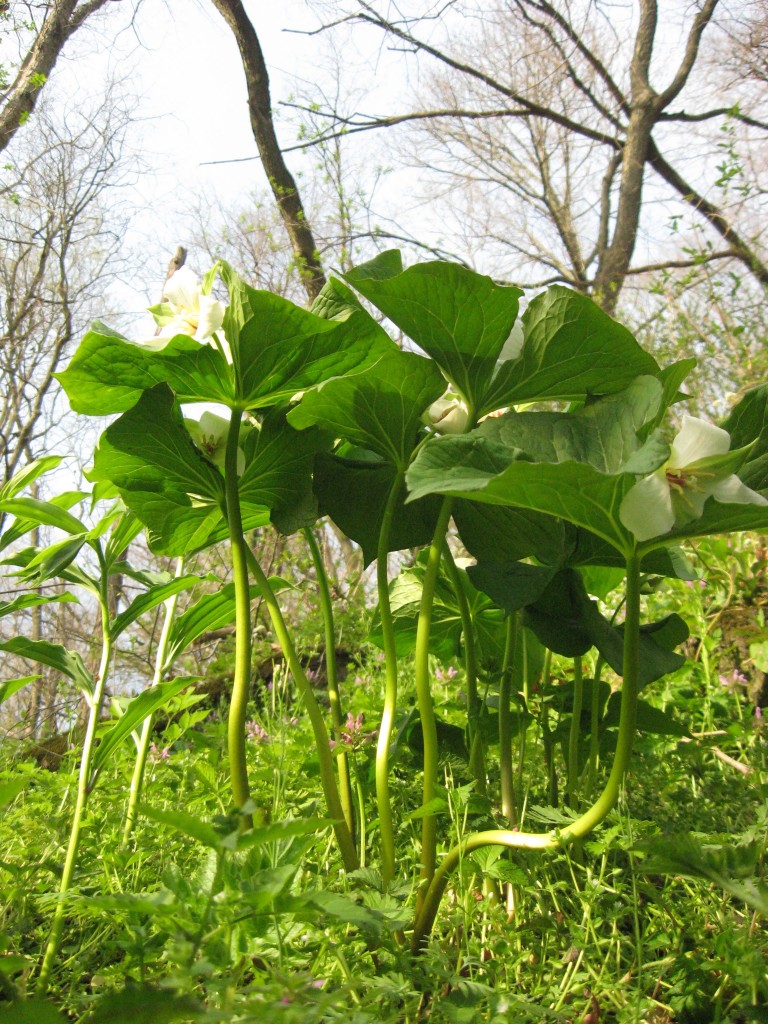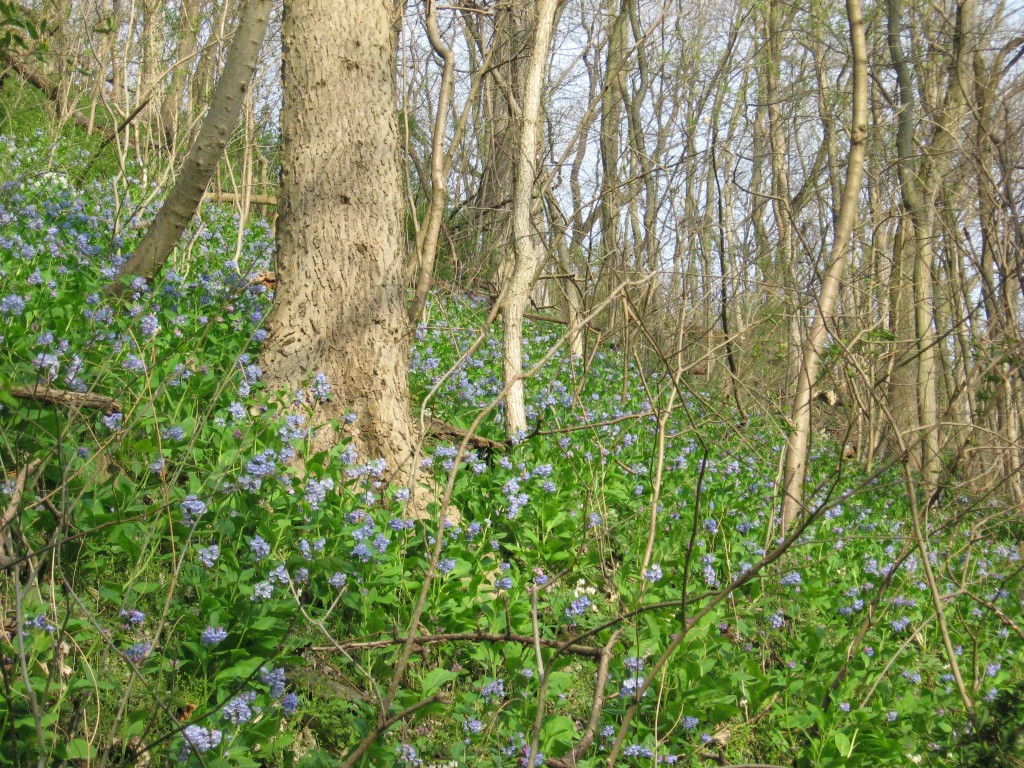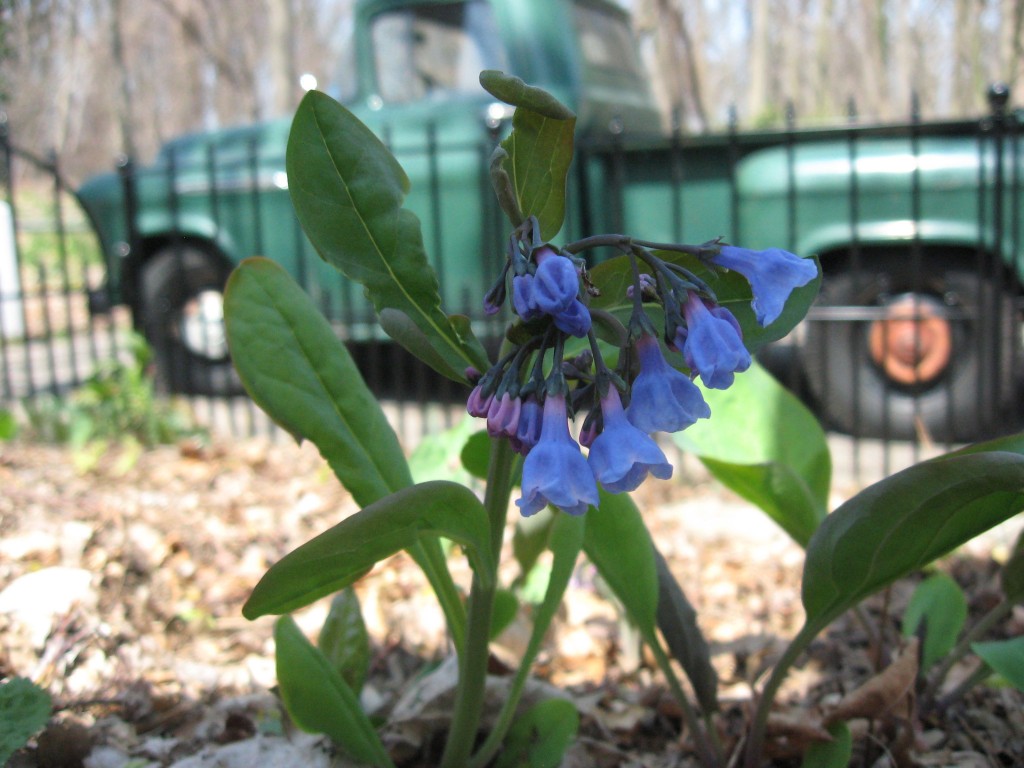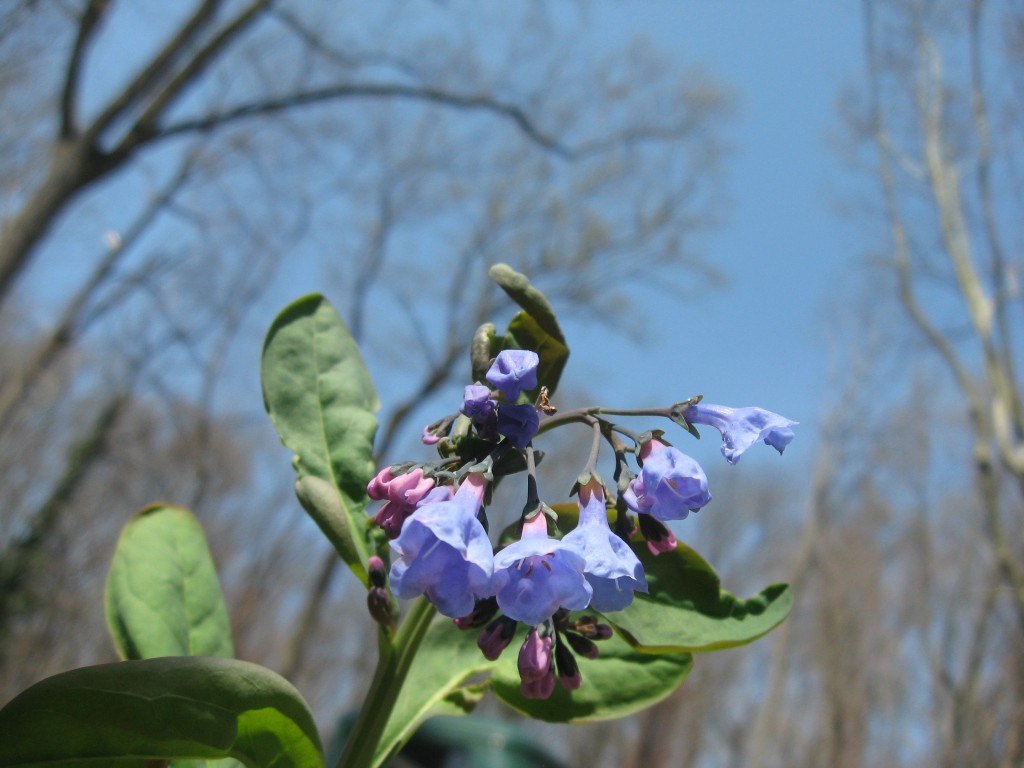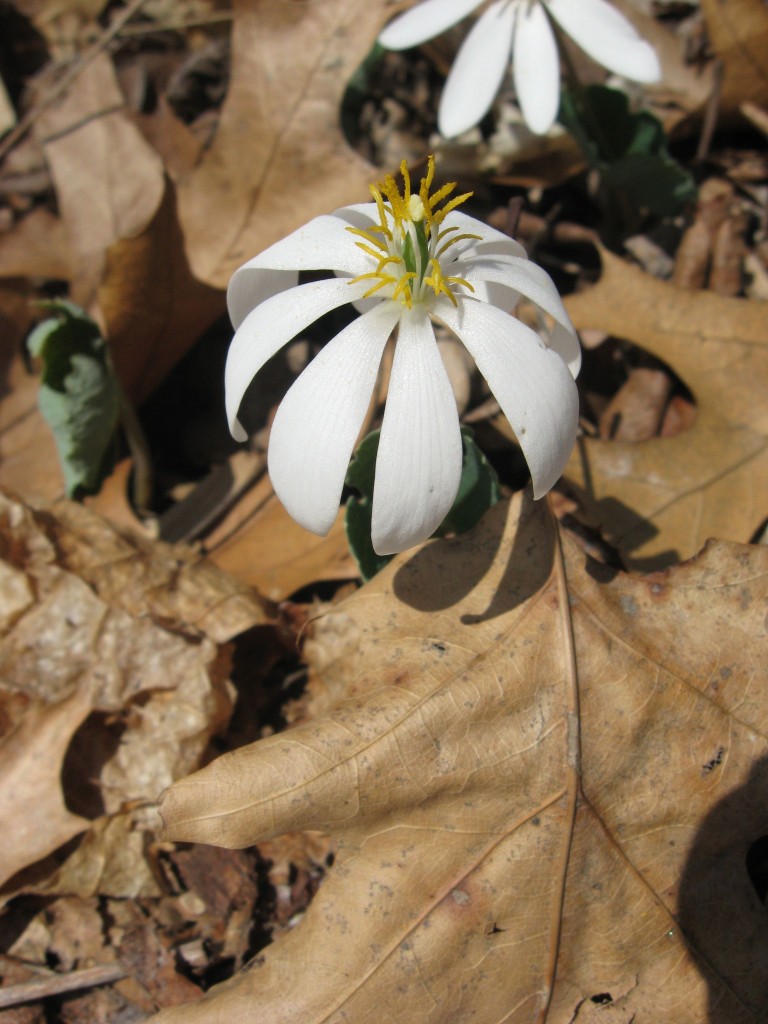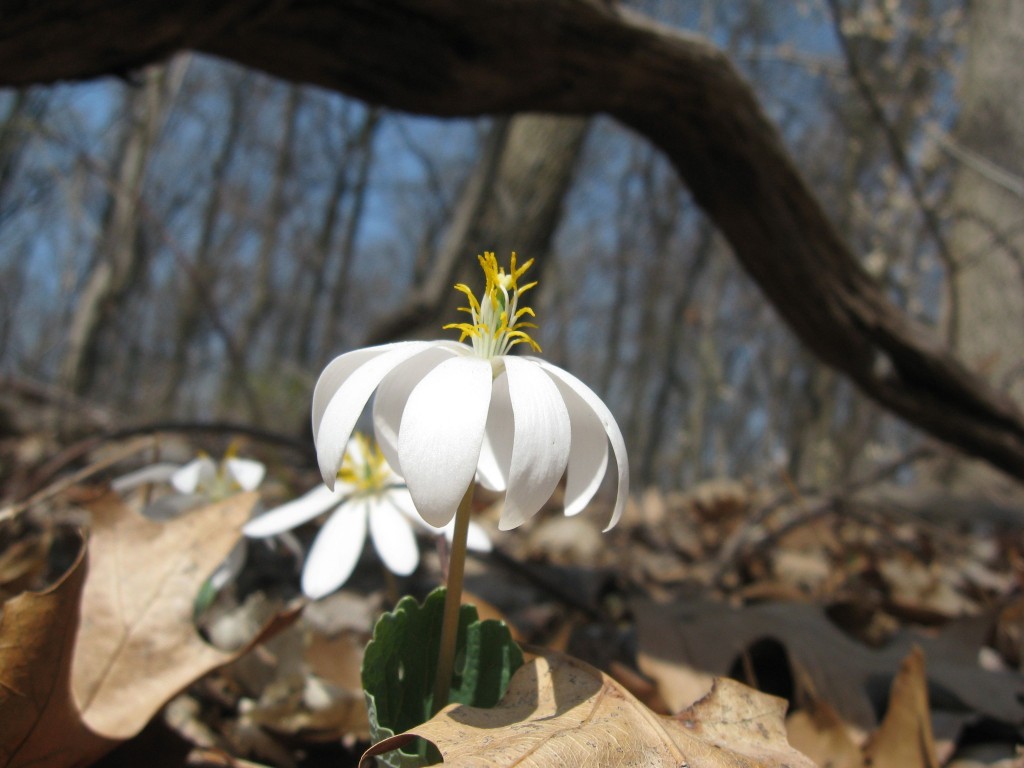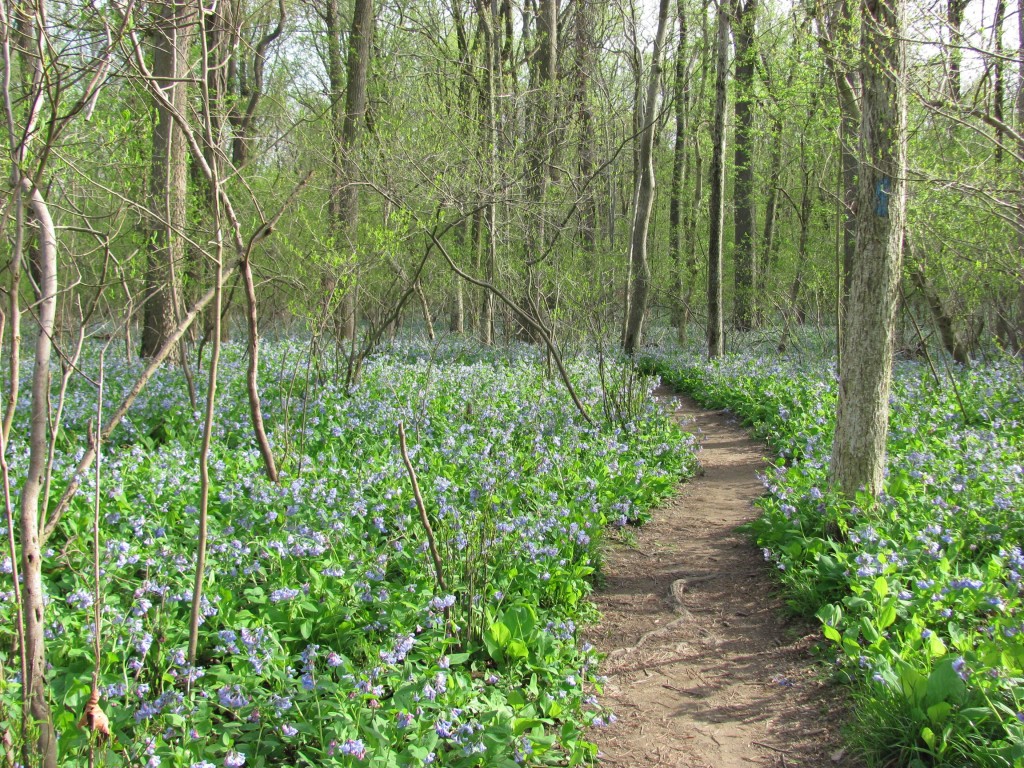
This inviting trail on this Susquehanna State Park floodplain led us for miles along the majestic Susquehanna River. The trail wound through an enchanting forest rising from a sea of blooming bluebells. The blue of the fresh flowers complemented the deep blue of the river’s water and the bright blue of the Maryland Spring sky. Across the river we could see the hues of that delicate spring green on the trees, this the same green that was the backdrop of the rich, robust blues that dominated the forest floor all around us.
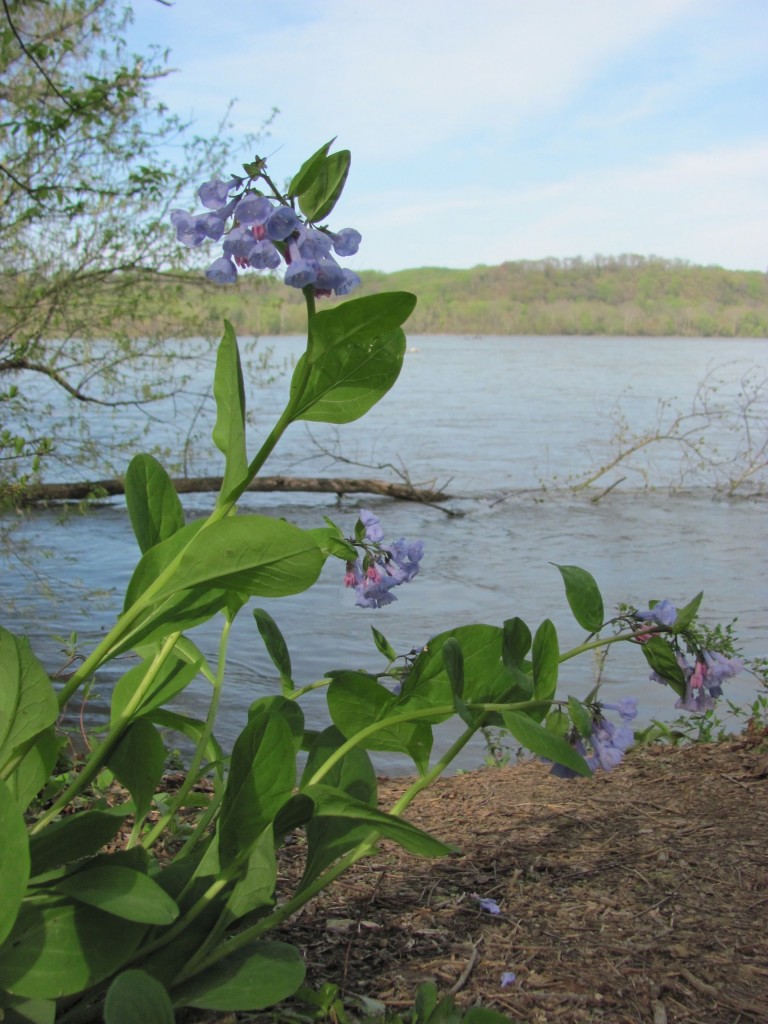
The hollow stems of the Mertensia virginica, the Virginia Bluebells, make for a delicate plant, easily crushed or broken off by the drop of a dead branch or the footsteps of animals, the leaves tender and floppy and richly green, leathery to the eye, but truly thin and never seeming to reach maturity- the leaves yellow and die before they ever become hardened or even tattered. This is a Spring plant that lasts as long as Spring lasts, flowering for weeks at a time, making it desirable in cultivation, as a garden beauty- actually the showpiece Spring garden planting as it produces masses of flowers of brilliant blue, right at the time when we gardeners and observers of natural beauty  yearn for anything green-and to have this luminescent blue in the inflorescence is astounding.
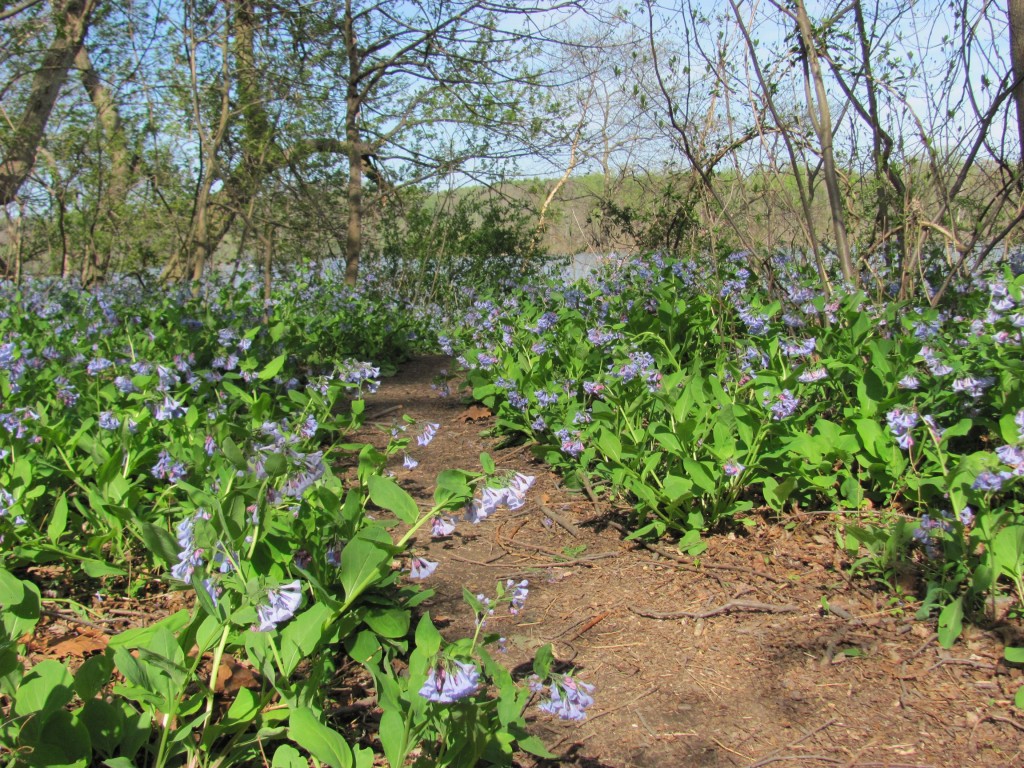
In the natural world, on its own, as it has been for millenia, this seemingly endless expanse of Bluebells here on this sunny April day along the riparian woodlands of the Lower Susquehanna, have us mezmerized.  We stopped on the trail to take in the sight of this vast population, growing in a forest of Sycamores, Paw-Paw and Red Maple…the beauty of the sight has no measure or quantifiable  relevance. What it is to just see the whole herbaceous layer, a completely blue inflorescence of native plants on the forest floor!
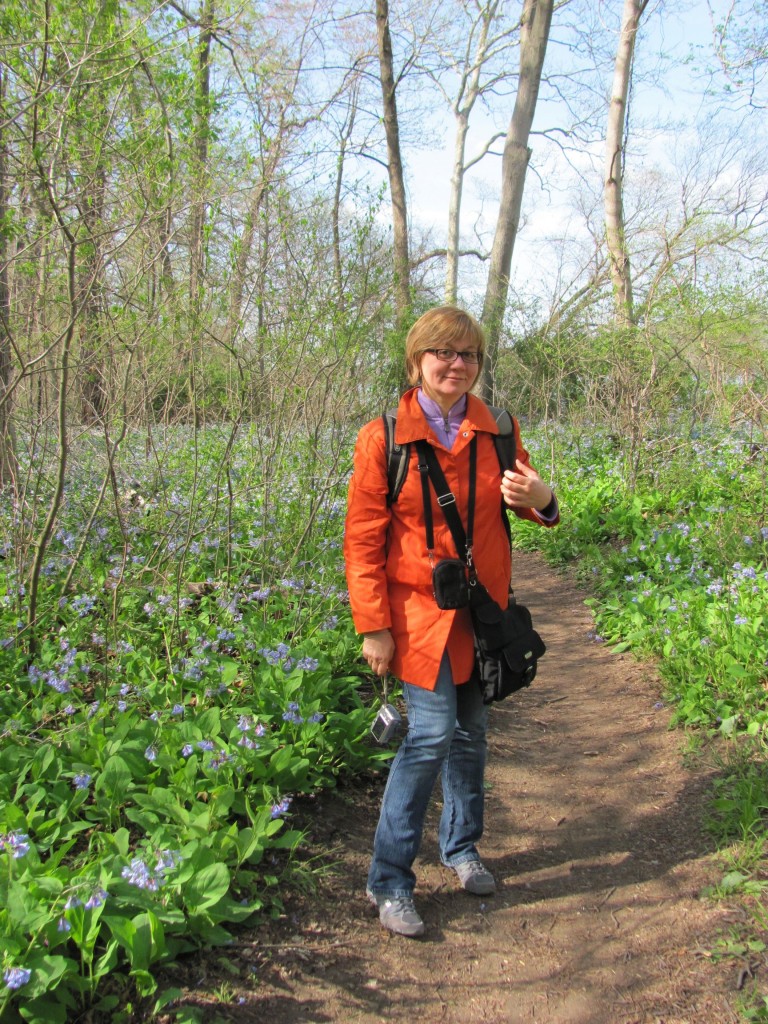
The blue of the sky and the blue of the river. The blue of the plants! Â We are ensconced in blue.
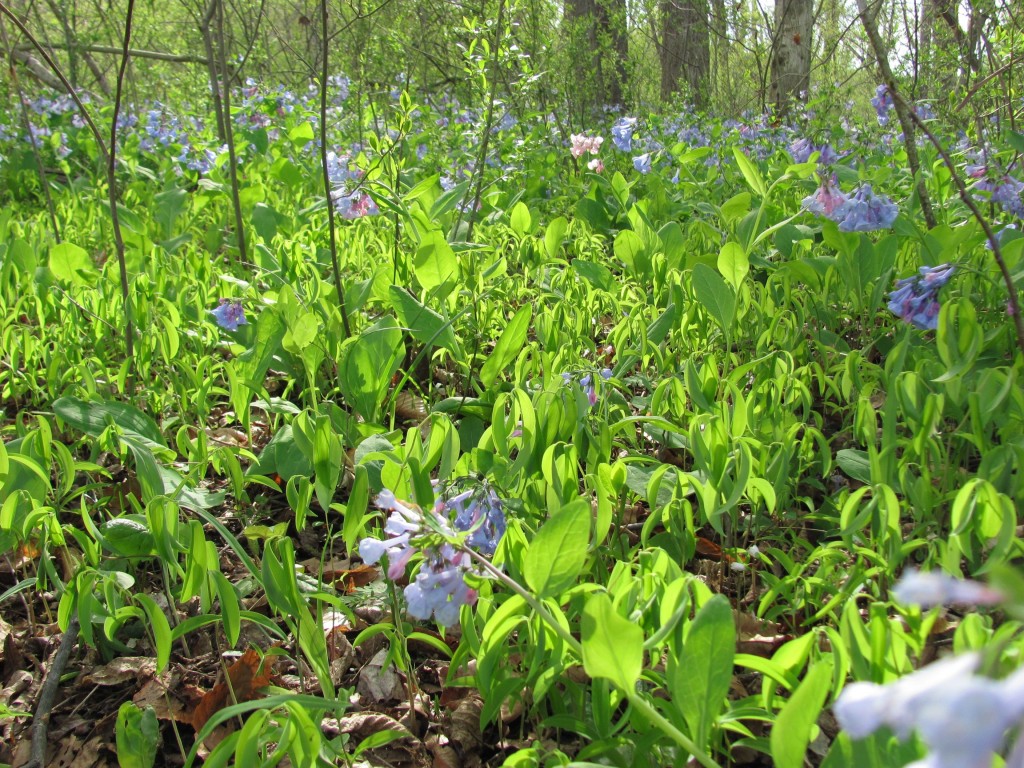
On this bright, sunny day, we are very happy, and it is so enjoyable to walk for miles along the river and see this Springtime carpet of bluebells.
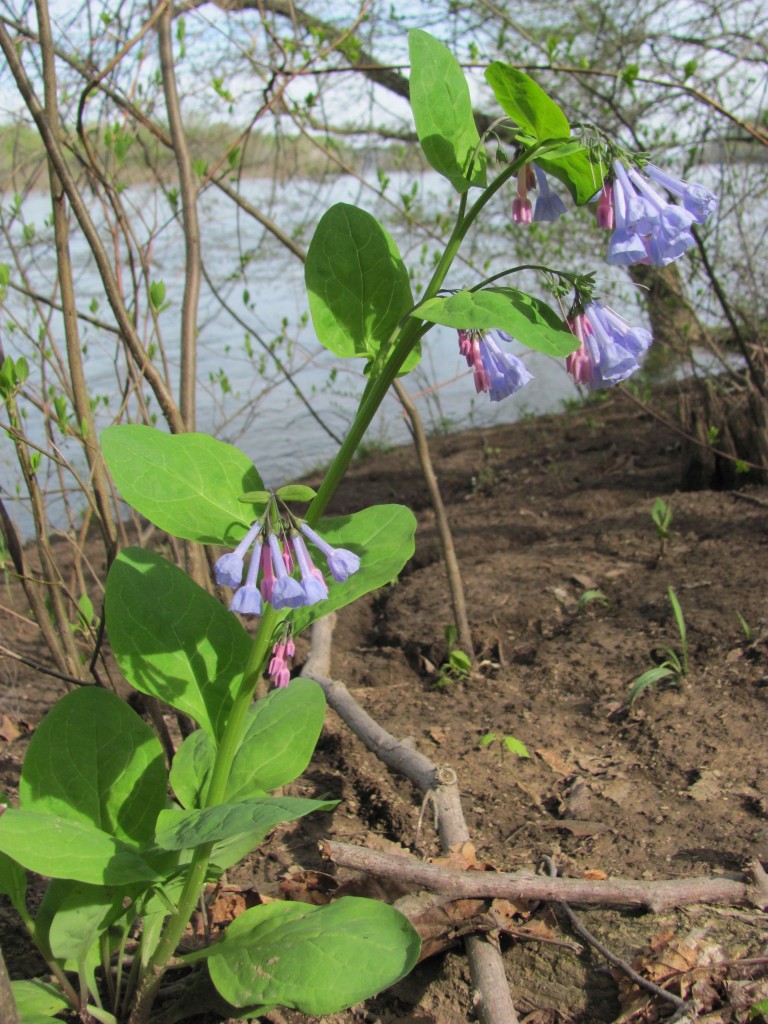
The very thought of them not being present becomes upsetting. We really love these flowers!  And we are not the only ones. The native bees are  very interested in them as well. Before the flowers bloom, they are pink.
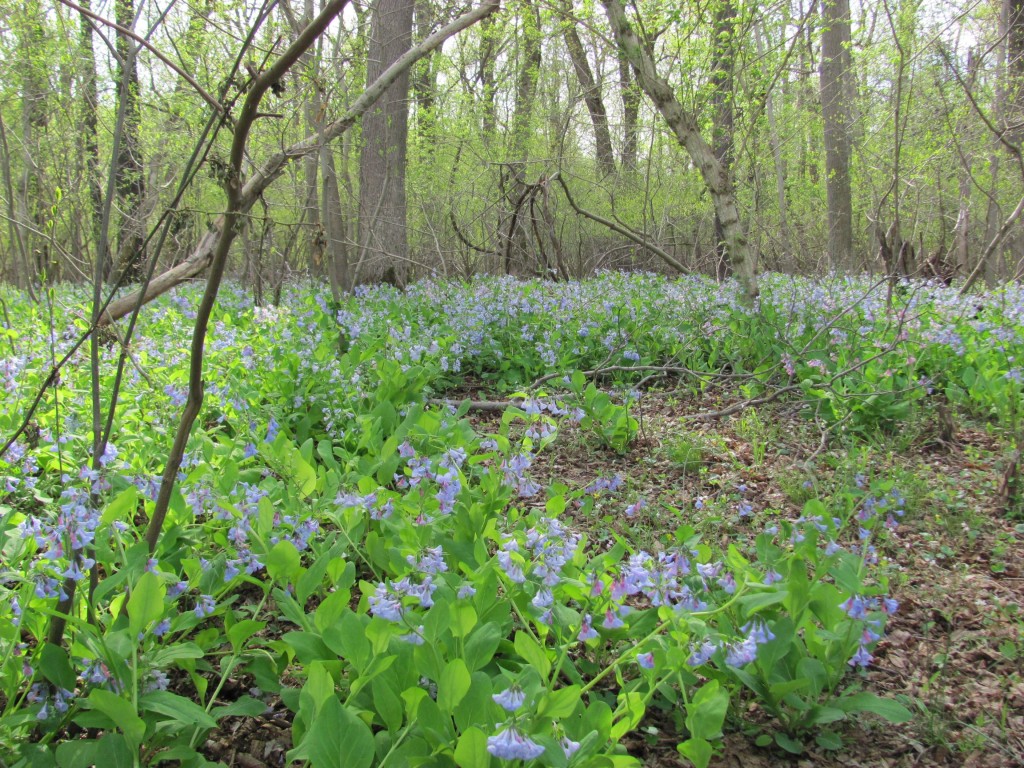
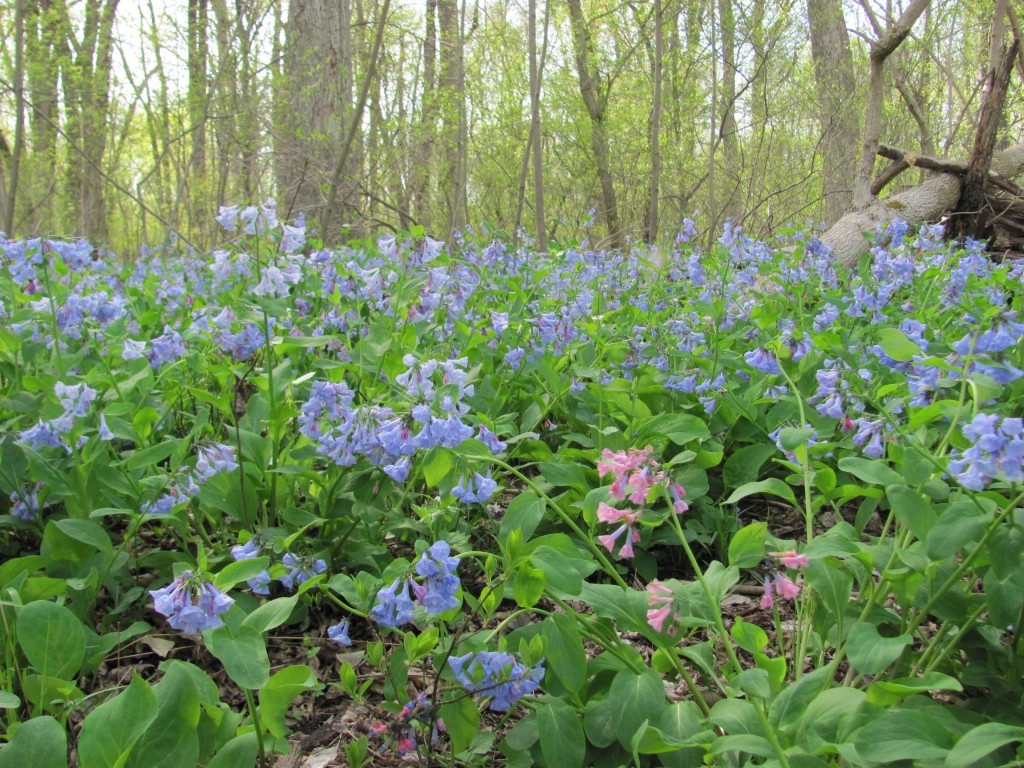
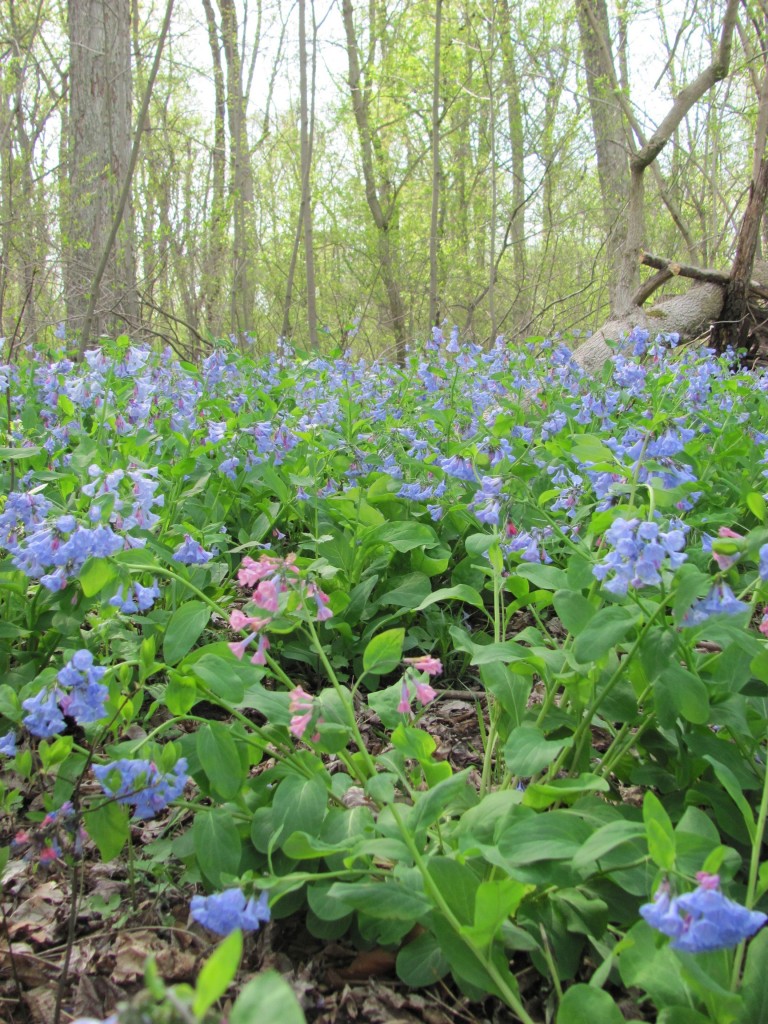
A pink flower on this one! We see these from time to time, and sometimes completely white ones too. That natural variation of species is interesting to observe in a highly populated setting.
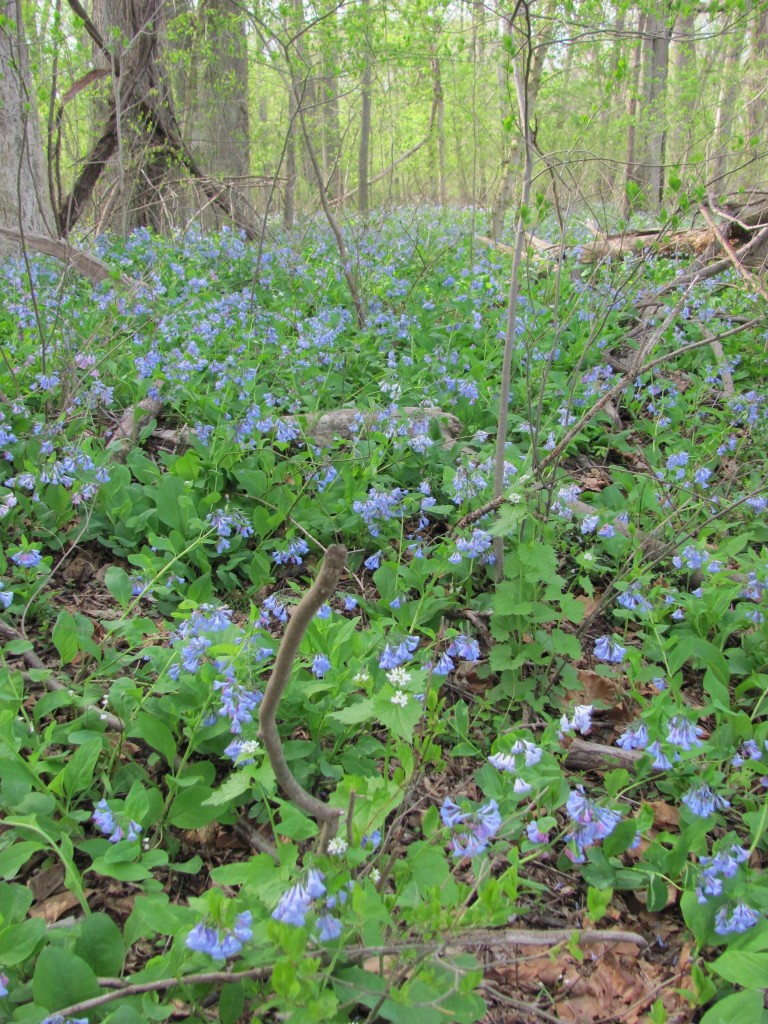
We can see to the horizon of this forest, bluebells all the way!
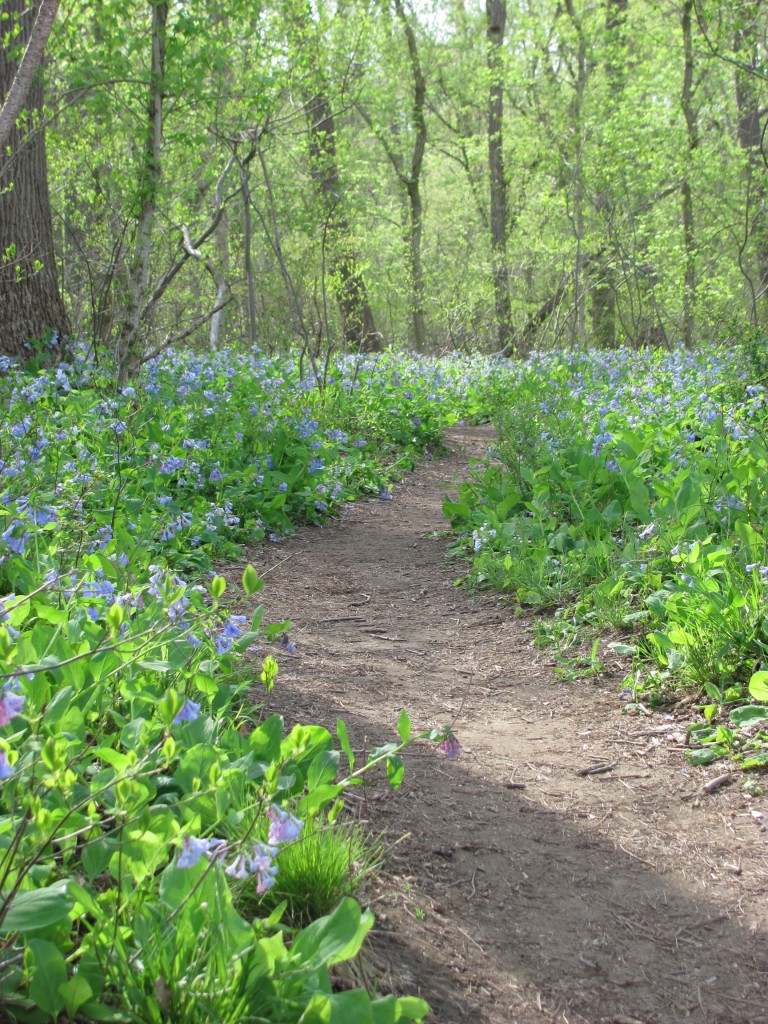
The gently winding trail through this natural area makes it look like a garden. For gardeners, nature is the true inspiration, and for trail builders and natural land managers, perhaps the garden is the best inspiration for trail design. How can a trail through this natural area be as inviting as possible and showing off the best views, all the while creating a sense of place so satisfying that there  is never a desire to leave the trail?  This trail wound its way along the floodplain, affording us spanning vistas of the Susquehanna from time to time, as well as leading us into the forests where we were surrounded by the bluebells.
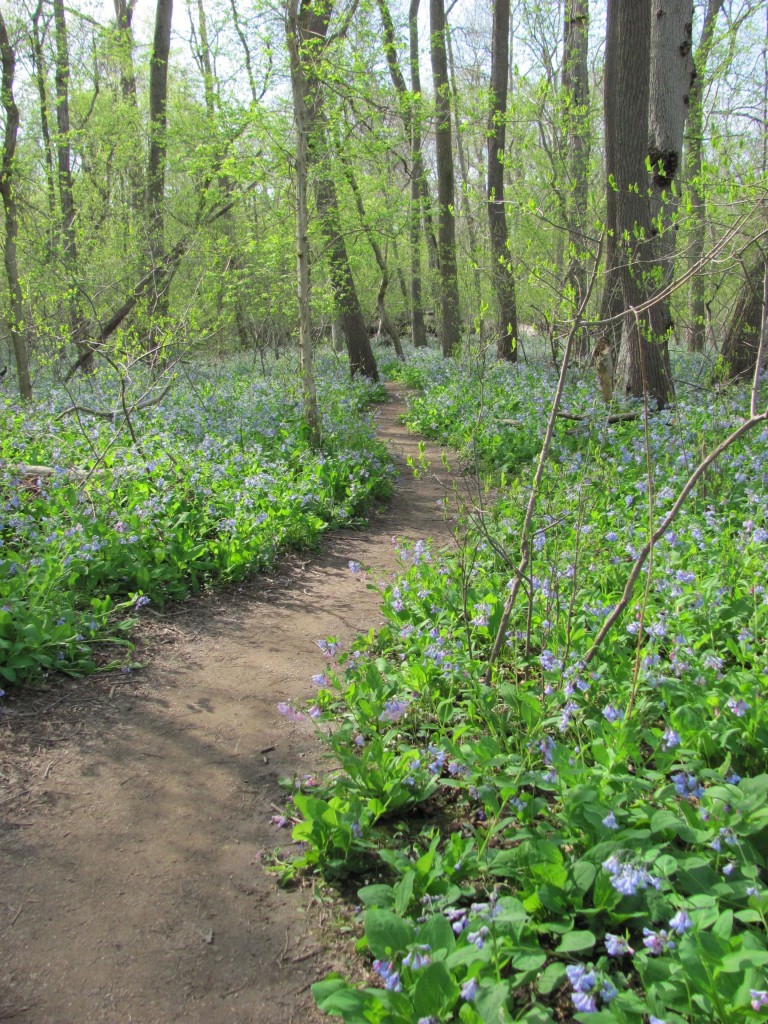
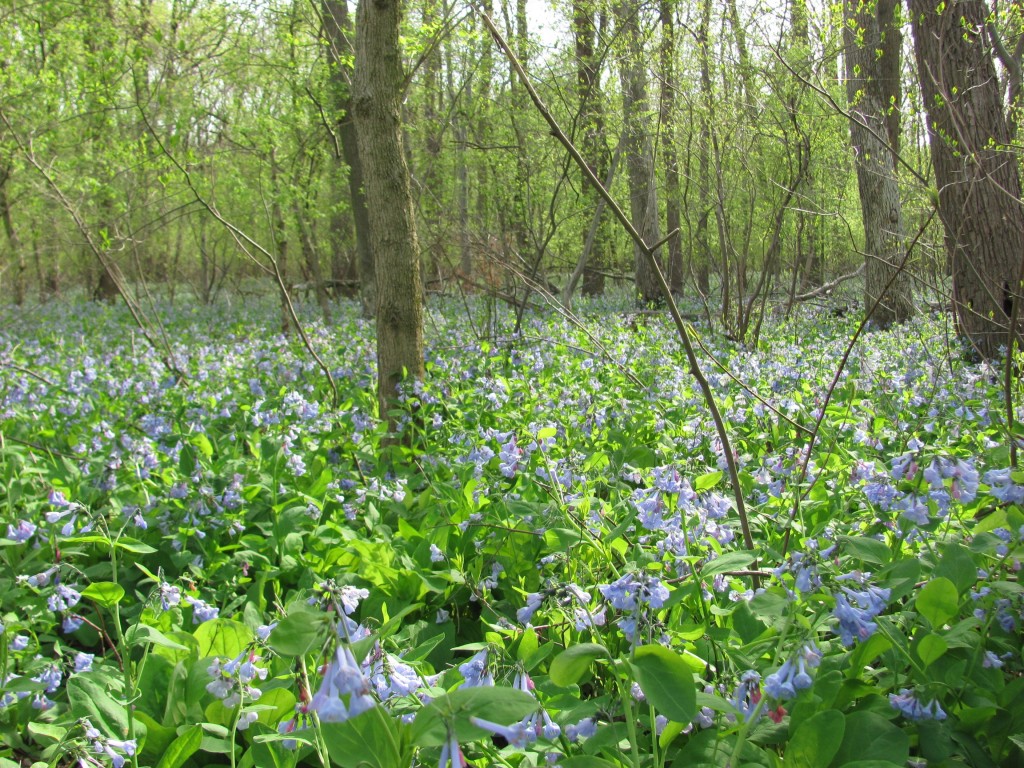
It must be noted that when a plant emerges from the ground below, and creates the color of the sky above with such vibrant luminescence, that we are witness to a communication of minerals, living cellular organisms, and the physical properties of air and water, such as how they refract light waves, so that we see them as we do, the light is bent into the blue that we see-this communication we understand as colors that we appreciate.
For us, and possibly the bees too, the message is just that, just why we are attracted to the message. These plants may eventually benefit from such an attraction by humans, by being propagated and maintained as garden specimens, gaining an evolutionary advantage in a world where more and more natural areas are being consumed by developments that destroy them and then plant a monolithic strata of alien cultivated species that have no interactive  relevance to the immediate natural surroundings.
Bluebells are relevant to the immediate biosphere and we find them attractive.
Maybe only the native plants with the prettiest flowers to humans will survive, along with the toughest native weeds.
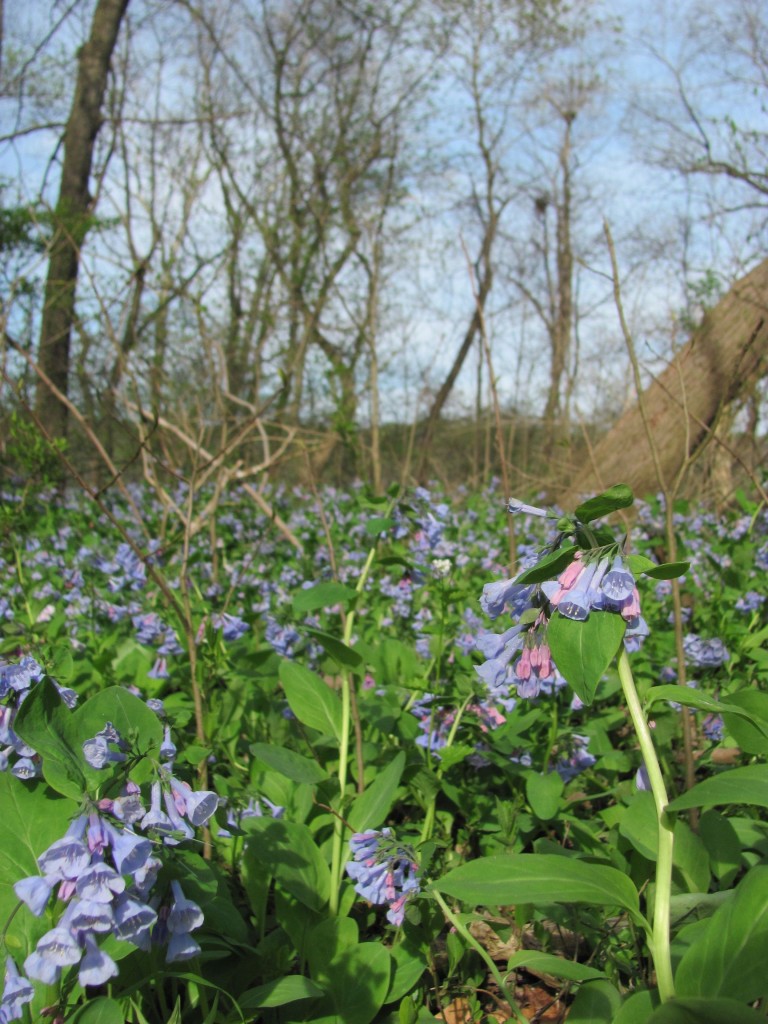
The delicate nature of Bluebells, so easily crushed, the flowers detach with the slightest pluck, they are truly the ephemeral nature of Spring. This is why we cannot wander off the carefully designed trails into the woods, because the Bluebells would be crushed immediately, and a heavily visited public park such as this, staying on the trails is paramount, for the Bluebells are for all, and all can destroy them so easily. To have what is left of the natural world in our area to be as wild as possible, and true to its origins, Â then we must think of them as gardens, to be weeded of invasives and carefully trodden upon. At least in this part of the world, in this part of Maryland, and the heavily populated northeastern U.S., wild is something we have to maintain and become stewards of. While we cannot create the wild, we can stop destroying it and we can begin to restore it, even in our gardens.
The wild, as history unfolds, has turned out to be quite enchanting and mesmerizing, and ever so delicate!
Seeing right into the flower of the Bluebell, we are looking at Spring itself, right in the eye.
